AH-64D Apache Block III Level 4 electronic drone driver
Boeing, the general contractor for the US Army for the AH-64D Apache, is testing the next version of the helicopter. The modification will provide for the transmission of a video stream in real time and accompanying metadata from UAVs of type: Hunter, Raven, Reaper and Shadow B to AH-64 Apache helicopters.
All changes are supposed to be made based on proven technologies: OSRVT MUMT-2 and VUIT-2.
The LOI-4 compatibility level allows you to view video data from a UAV camera, monitor its payload, and have a certain impact on the UAV flight path in certain situations.
The estimated final stage is the 5 level (LOI-5), after which Apache will have full control of the UAV at all stages of the flight, including take-off and landing.
Updates include an improved fire control radar (FCR) processor for target detection, tactical data transfer control system (TCDL), meteorological conditions sensor (IMC), UAV control point
The prototype of the UAV flight control station was tested on MD 530F during tests in Utah and field trials in Afghanistan.
MUMT-2 components on OH-58D helicopter - Kiowa, OSRVT by AAI Corp. when receiving video from small unmanned aerial vehicles using a digital data link (DDL) - Programs: GCSM-UGCS.
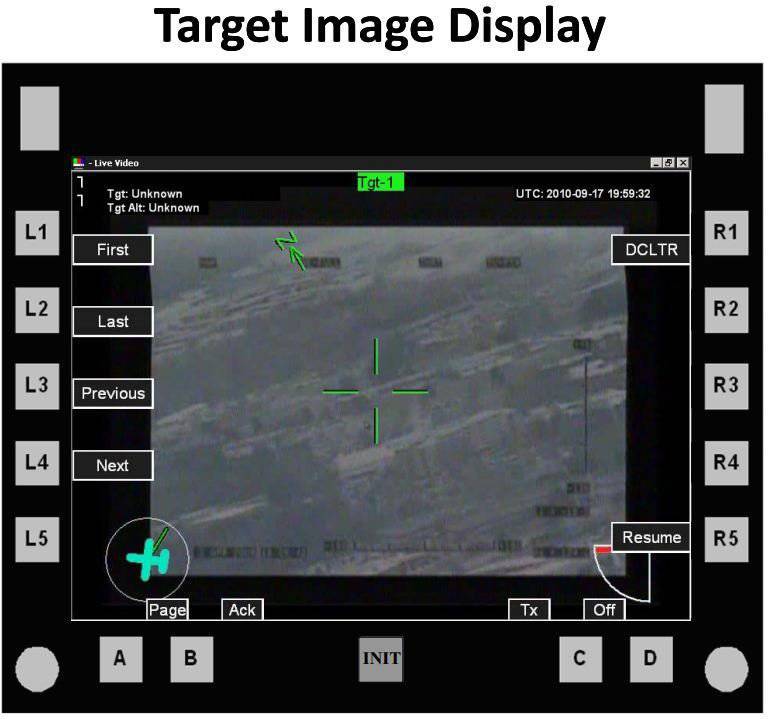
VUIT-2 is based on a computer from Quantum3D and a mini tactical common data line (M-TADS)
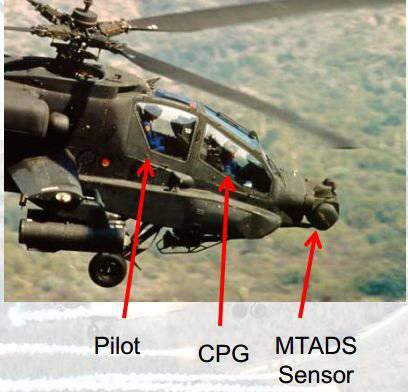
AH-64D The Apache Block III L 4 is not the first American helicopter in an open system architecture.
There are already CH-47F cargo and MH-47G Special Operations Chinooks helicopters with a common architecture system (CAAS), which can be combined with the Apache system.
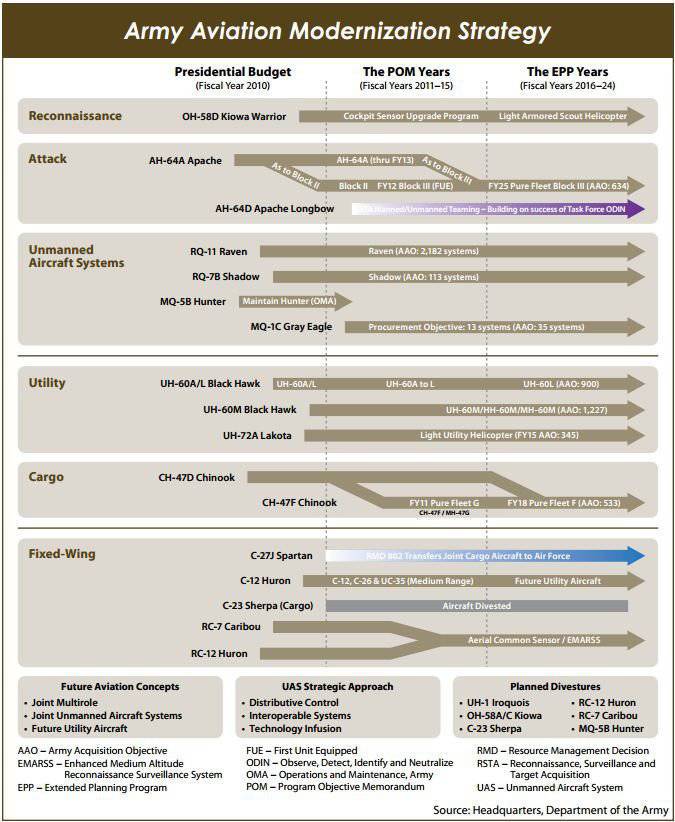
The ability of the AH-64D Apache Block III Level 4 to directly control the UAV and receive real-time data greatly expands the capabilities of the helicopter in four directions.
1. Access to a UAV (UAS) will allow the pilot to see more zones on the battlefield than he can today. UAV operates at a higher altitude than Apache and, as a rule, are placed at some distance from the helicopter. Thus, the pilot sees not only the area around his position, but also the second position around the UAV, at a considerable distance from his location, so-called. multi vision.
2.Pilot and operator weapons can view potential threats and targets from a different angle. Apache has an upgraded target designation system (designation Sight (M-TADS)), located in the module on the nose of the helicopter. This turret contains a television camera and an infrared sensor with a choice of zoom levels, as well as a laser to illuminate the target.
Using TADS, Apache can survey the battlefield, choose a target and light it up with a laser to strike. But if the target is hidden behind the terrain or building, the pilot or the gunner does not see the target, nor can they assess the threat from the target. However, having sent the UAV along the trajectory (route), which allows seeing the target behind the obstacle, it seems to “transfer” its sensors to the other side, while remaining in place. Then, having gained access to the video channel from the UAV cameras, the pilot and the gunner can now see which targets and threats are hidden from them, and everything happens in real time.
3. Many of the UAVs have onboard a DL laser (target illumination). Their DG laser systems are fully compatible with helicopter gunship rocket propulsion systems. The Apache helicopter uses this opportunity to attack targets remotely, using target designation from UAVs, while remaining hidden from them, not falling under the target’s air defense weapons or infantry fire covering the target.
Targeting their Hellfire missiles occurs via a laser data center from a UAV transmitted via a metadata channel. Sensor data, illumination and target location are automatically transferred between UAVs (UAS) and Apache, synchronized in time and geographic location: helicopter, UAV, AIM, adjustments are made according to the conditions of the launch zone and the target zone. Start is in progress. The UAV can evaluate the result of the attack and if there is a blunder, it is almost instantly possible to repeat the blow.
4. Apache will be able to receive a video image from a UAV and send it to other platform elements taking part in attacking the target: to another Apache, infantry, UAV or will be transferred to the command structure.
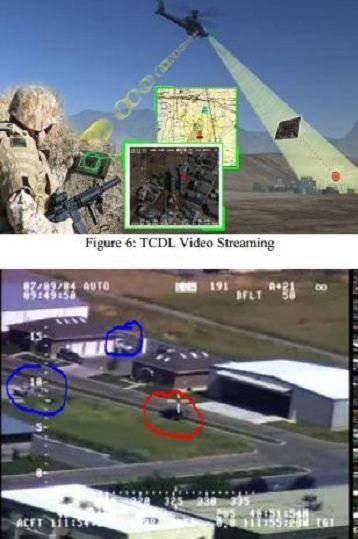
Test equipment components were carried out in real conditions of the desert and mountainous areas (Utah, Afghanistan), then to assess the impact of bullet storms and maximum temperatures.
- Manned / Unmanned Common Architecture Program (MCAP) Net Centric Flight Tests (Dale Johnson); AAAA 2011, Office Evolution of US Army Manned / Unmanned Teaming (Apache Gregory S. Fortier)
- http://www.boeing.com; http://mport.bigmir.net; http://www.theresearchcorridor.com; www.ausa.org; http://mport.bigmir.net; http://www.suasnews.com
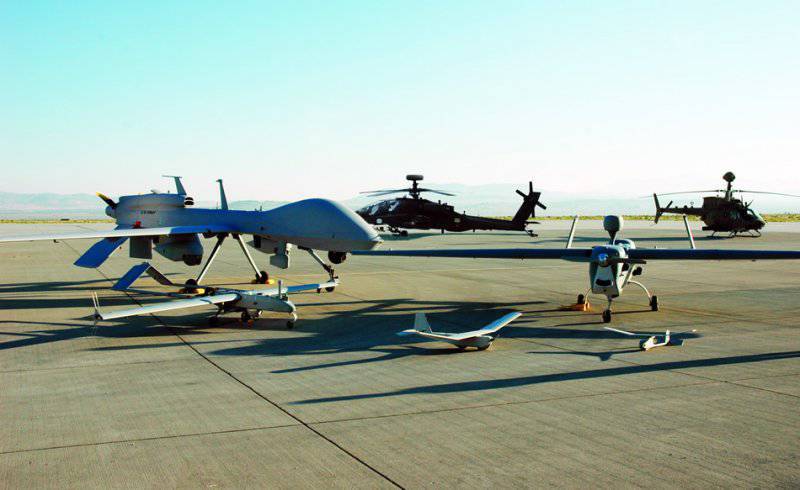
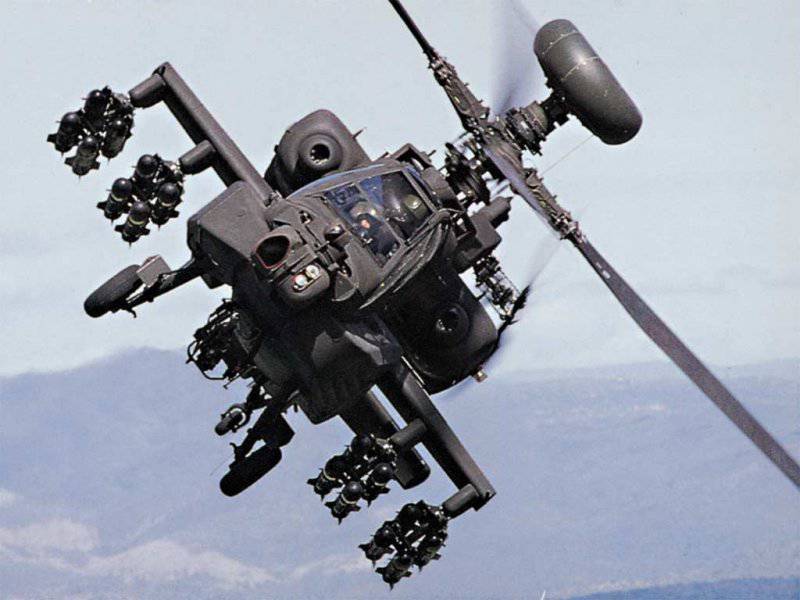
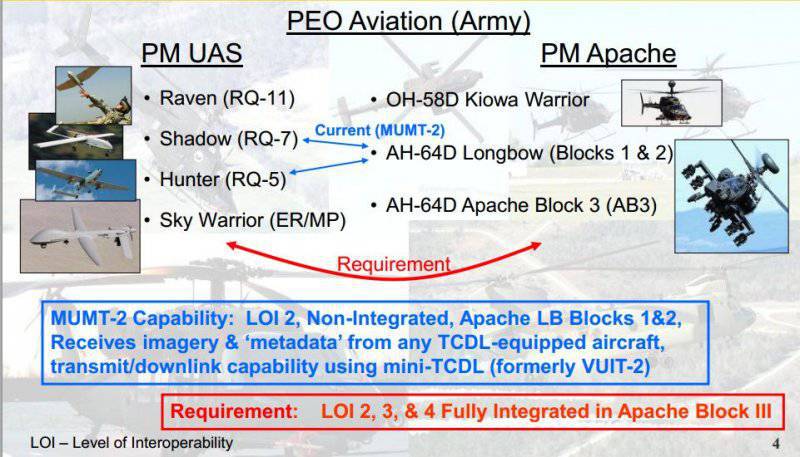
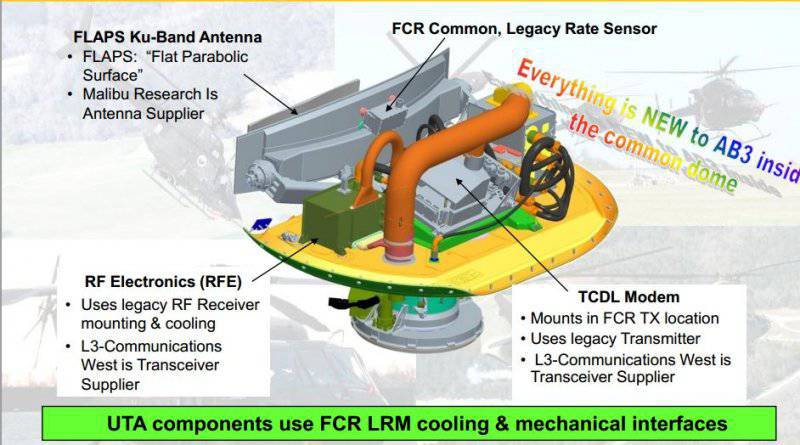
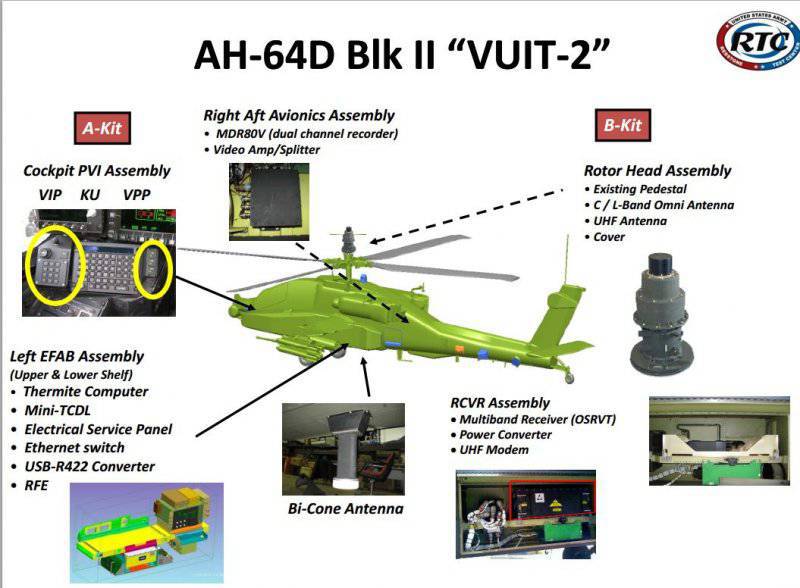
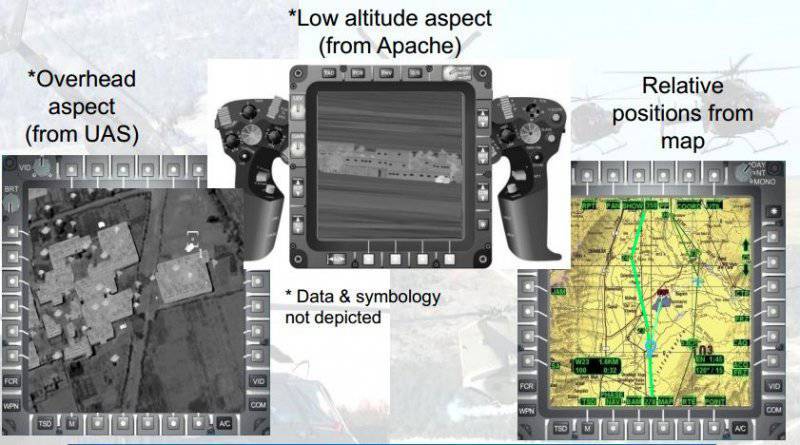
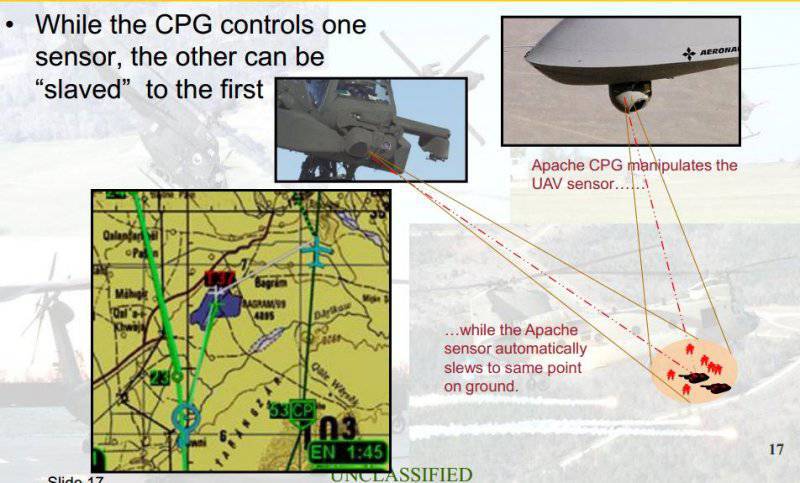
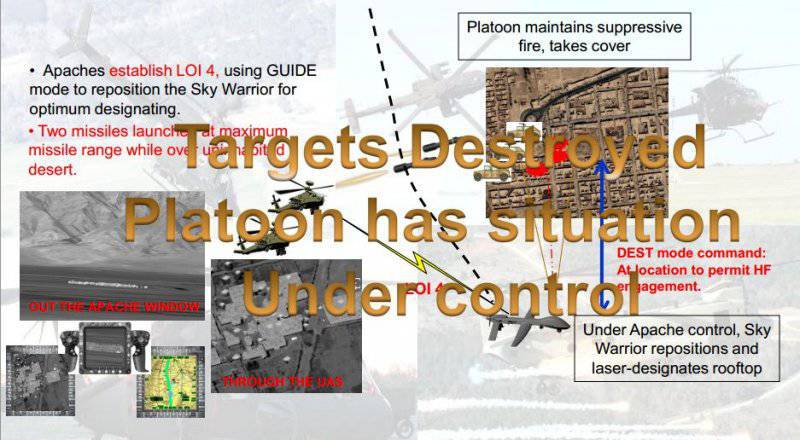
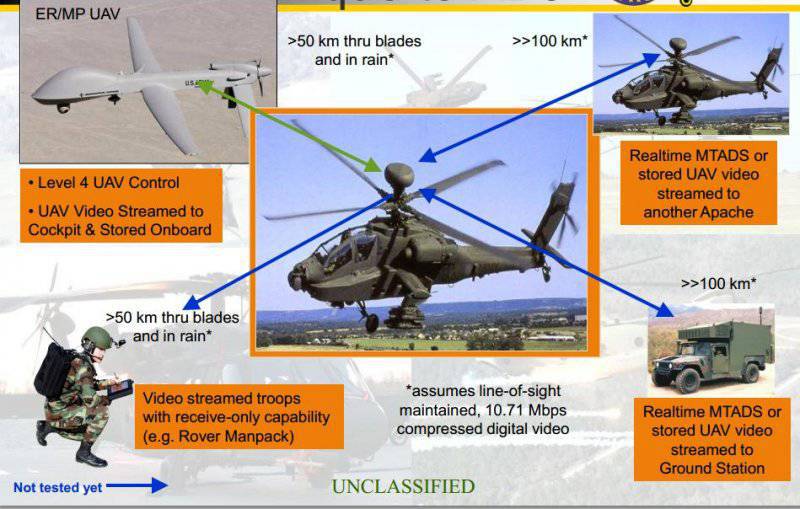
Information